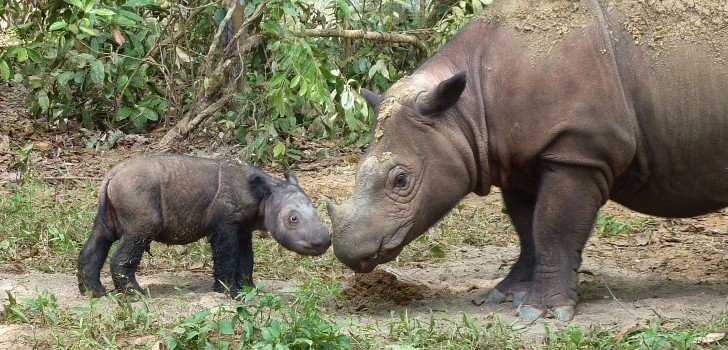In a sad dose of reality, the Sumatran rhinoceros has been declared extinct in its native country of Malaysia by scientists. Primarily found in the Asian country, scientists have not seen a Sumatran rhino in the wild since 2007, except for two female rhinos captured in 2011 and 2014.
Scientists believe there are less than 100 of the magnificent creatures left roaming across Southeast Asia. There are nine others that are safely secure in captivity – three of them located in the Malaysian state of Sabah.
The conclusion of extinction was reached by a team of scientists from the University of Copenhagen’s Center for Macroecology, Evolution and Climate and was published in the conservation journal Oryx.
The authors state that, “As of June 2015, no further signs of the species have been found in Sabah, and it is safe to consider the species extinct in the wild of Malaysia.” Borneo Rhino Alliance head Junaidi Payne indicated the rhino’s extinction was inevitable because of a lack of breeding and the relentless hunting by poachers.
Payne does have some hope for the species. He believes every Sumatran rhino still living must be closely managed with the efforts of the international community. He stated that, “We should certainly be thinking of boosting Sumatran rhino numbers through a single program that is not based on nationalistic thinking.” Payne, one of the authors of the study, is currently working with the government of Sabah, Malaysia in an effort to impregnate the protected female rhinos through in vitro fertilization.
The study’s lead author, Rasmus Gren Havmøller echoed Payne’s analysis and stated in a press release that, “It is vital for the survival of the species that all remaining Sumatran rhinos are viewed as a metapopulation, meaning that all are managed in a single program across national and international borders in order to maximize overall birth rate. This includes the individuals currently held in captivity.”
The researchers included in their study a number of suggestions that may improve the species’ plight over time.
One possible solution includes the creation and development of management zones where the rhinos can be moved. These areas would have high-level security in order to protect their existence.
Co-author of the study and director of the Rhino Foundation of Indonesia Widodo Ramono stated that, “Serious effort by the government of Indonesia should be put to strengthen rhino protection by creating Intensive Protection Zones, intensive survey of the current known habitats, habitat management, captive breeding, and mobilizing national resources and support from related local governments and other stakeholders.”
Stay Connected